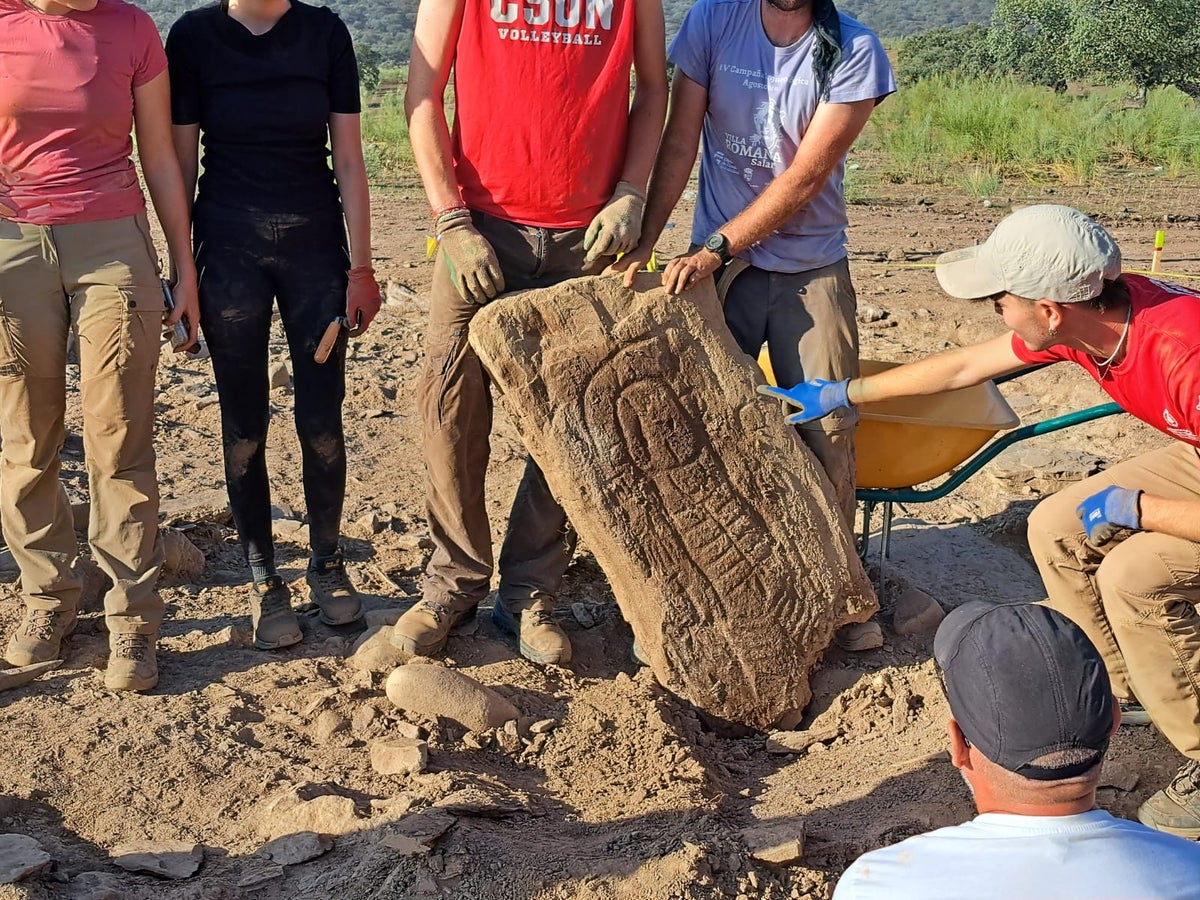
A prehistoric monument unearthed at a 3,000-year-old funerary complex in Spain points to gender roles in the region likely being more fluid than previously thought.
The stone slab, uncovered during an archaeological dig in the Las Capellanías funerary complex in southwest Spain, depicts a human figure with a face, hands, feet, a headdress, necklace, two swords, and male genitals.
Researchers, including those from Durham University in the UK, say the find is very rare and changes the views about the nature of social elites in this region of Europe about 3,000 years ago.
Previously features like a headdress and necklace on a stela – a carved or inscribed stone slab or pillar – were thought to represent a female form while the inclusion of weaponry such as swords was interpreted as male “warrior” stelae.
However, both these forms mostly lacked any specific representation of male or female physical traits, scientists say.
But the new stone slab discovery in Canaveral de Leon, Spain, including both “male” and “female” elements, challenges these assumptions, according to researchers.
This unique and unprecedented mix of “male” and “female” traits breaks previous gender stereotypes.
Archaeologists now say the social roles depicted by these carvings were more fluid than previously thought, indicating prehistoric Iberian societies may have viewed gender differently.
“The stela 3 of Cañaveral de León changes all this. It combines traits of ‘headdress’ and ‘warrior’ types, showing that the social roles depicted by these standardized iconographies were more fluid than previously thought,” researchers said in a statement.
“Furthermore, as the new stela also includes male genitalia, it demonstrates that these social roles were not restricted to a specific gender, but could be associated with different genders,” they noted.
The latest stone slab is the third such artifact unearthed in the location, shedding light on the funerary rituals of the time.
About 300 such artifacts, ranging anywhere from 0.5 m (1.5 ft) to several metres high, have so far been unearthed in Spain and Portugal – the oldest one dating back to 2,000 BC.
Researchers believe the location of Las Capellanías is also significant.
They say it is present on what would have been a pathway linking to main river basins, forming a communications highway during the ancient times.
The decorated stone slab may have also had a role as territorial markers, archaeologists say.







